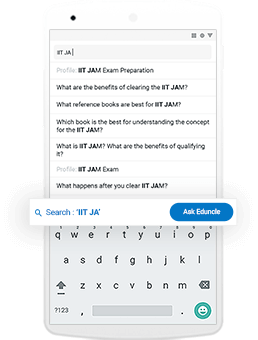
Narendra Modi became Prime Minister of India on 26th May 2014. Since then, he had launched various Government Schemes for the welfare of the citizens of the country. These schemes can be at the State level, Central level or at, Central and State both.
The main focus of the Government to launch these schemes is infrastructure development and empowerment of the poor people.
This blog covers all the important Government Schemes which could be asked in any competitive exams like SSC Exams, Railway Exams, IBPS Exams. Every year questions are asked from these Modi schemes in exams.
[toggle title="1. Pradhan Mantri Jan Dhan Yojana"]
Pradhan Mantri Jan Dhan Yojana (PMJDY) was launched by the Prime Minister on 28th August 2014.
The main objective of this scheme is to provide access to financial services for all households in the country.
Pradhan Mantri Jan Dhan Yojana is National Mission for Financial Inclusion to ensure access to financial services, namely, Banking/ Savings & Deposit Accounts, Remittance, Credit, Insurance, Pension in an affordable manner.
The slogan of the scheme is: Mera Khata- Bhagya Vidhaata.
Under this scheme, any individual above the age of 10 years, who does not have a bank account, can open a bank account with zero balance.
55 crore new bank accounts have been opened so far through this scheme.
The special benefits for opening bank accounts under Pradhan Mantri Jan Dhan Yojana (PMJDY) is:
Zero Balance account.
RuPay debit card with an in-built accident insurance cover of Rs.1 lakh. Life insurance cover Rs. 30000/-.
After the satisfactory operation of account for 6 months, an overdraft facility of Rs.5000/- will be available only for one bank account per household, preferably to the lady of the household.
The name given to the business correspondent agent engaged by banks for providing banking services at locations where the opening of a branch is not viable is Bank Mitr.
Official Website: http://www.pmjdy.gov.in
[/toggle]
[toggle title="2. Pradhan Mantri MUDRA Yojana (PMMY)"]
Pradhan Mantri Mudra Yojana (PMMY) was launched by the Prime Minister on 8th April 2015.
MUDRA stands for Micro-Units Development and Refinance Agency.
The main objective of the scheme is to provide financial support for the growth of micro enterprises sector.
There are 3 categories under this scheme:
Shishu: Loan up to ?50,000 (US$740) Kishore: Loan ranging from ?50,000 (US$740) to ?5 lakhs (US$7,400) Tarun: Loan above ?5 lakhs (US$7,400) and below ?10 lakhs (US$15,000)
The features of this Central Government Scheme include the establishment of Credit Guarantee Fund for MUDRA Units (CGFMU) with the objective to reduce the credit risk to banks, NBFCs, MFIs and other financial intermediaries, who are member lending institutions (MLIs).
MUDRA Bank will work under Small Industries Development Bank of India (SIDBI).
MUDRA Bank has been started with an initial corpus of Rs. 20,000 crores.
Official Website: http://www.mudra.org.in
[/toggle]
[toggle title="3. Pradhan Mantri Jeevan Jyoti Bima Yojana (PMJJBY)"]
Pradhan Mantri Jeevan Jyoti Bima Yojana (PMJJBY) is a government initiative which was launched by the Prime Minister on 9th May 2015.The main objective of the scheme is to provide life insurance cover to all Indian citizens.
The scheme is available to all Indian citizens between the age of 18 to 50 years.
All the Indian citizens between 18-50 years of age having a saving bank account are eligible for the scheme.
Under the scheme, a person gets a life insurance cover of Rs.2 Lakh with an annual premium of just Rs.330 excluding service tax.
This scheme will be linked to the bank accounts opened under Pradhan Mantri Jan Dhan Yojana.
Official Website: http://www.jansuraksha.gov.in
[/toggle]
[toggle title="4. Atal pension Yojana (APY)"]
Atal pension Yojana was launched on 9th May 2015 by the Prime Minister.
The scheme is administered by the Pension Fund Regulatory and Development Authority (PFRDA).
The main objective of the scheme is to increase the number of people covered under any kind of pension scheme.
The scheme is available to all Indian citizens between the age of 18-40 years.
The scheme provides fixed pension for the subscribers ranging between Rs.1000 to Rs.5000.
It is mainly targeted to unorganized sector workers.
A person, under this scheme, have to make a contribution of at least 20 years before he gets a pension to avail the benefits of the scheme after the age of 60 years.
Official Website: http://www.jansuraksha.gov.in
[/toggle]
[toggle title="5. Pradhan Mantri Awas Yojana (PMAY)"]
This Government Initiative was launched on 25th June 2015 by the Prime Minister.
The main objective of the scheme is to provide affordable houses to all Indian citizens.
Under the PMAY, the government aims to provide about 5 Crore affordable homes to the people belonging to Economically Weaker Sections and Lower Income Group categories by the year 2022.
A subsidy ranging between INR 1 lakh and INR 2.30 lakh will be granted to lower income groups of the urban
The government will provide financial assistance to poor home buyers and also provide subsidy on home loans.
Official Website: http://mhupa.gov.in
[/toggle]
[toggle title="6. Pradhan Mantri Fasal Bima Yojana (PMFBY)"]
Pradhan Mantri Fasal Bima Yojana (PMFBY) scheme was launched on 18th February 2016 by Prime Minister as a part of Modi government schemes.
The main objective of the scheme is to provide insurance cover to Rabi and Kharif crops and also provide financial support to farmers in case of damage of
Under this scheme, the farmers have to pay a uniform premium of 2% for all Kharif crops and 1.5% for all Rabi crops.
For the commercial horticulture crops, premium rate will be 5%.
The new scheme is implemented by the Agriculture Insurance Company of India Ltd with no participation of the private sector.
Official Website: http:// agri-insurance.gov.in
[/toggle]
[toggle title="7. Make in India"]
The Government Scheme -Make in India was launched by the Prime Minister on 25th September 2014.
The main objective is to encourage multi -national and national companies to manufacture their products in India. The main aim is to focus on job creation and skill enhancement in 25 sectors of the economy.
The initiative aims to raise the contribution of the manufacturing sector to 25% of the Gross Domestic Product (GDP) by the year 2025 from its current 16%.
The initiative is built on four pillars: New Processes, New Infrastructure, New Sectors and New Mindset.
Official Website: http://www.makeinindia.com
[/toggle]
[toggle title="8. Swachh Bharat Abhiyan"]
Swachh Bharat Abhiyan was launched by the Prime Minister on 2nd October 2014.
The main objective of the scheme is to fulfill Mahatma Gandhi’s dream of clean and hygienic India by his 150 th birth anniversary in 2019.
The slogan of the scheme is: Ek Kadam Swachhta Ki Ore.
Swachh Bharat Mission is being implemented by the Ministry of Urban Development (M/o UD) and by the Ministry of Drinking Water and Sanitation (M/o DWS) for urban and rural areas respectively.
Sindhudurg district topped the overall list of Swachh Bharat Survey in 2016.
Under the Swachh Bharat Mission, it has been decided to undertake a special clean-up initiative focused on 100 iconic heritages, spiritual and cultural places in the country.
The Nirmal Bharat Abhiyan has been renamed to Swachh Bharat Abhiyan.
Official Website: http://swachhbharat.mygov.in
[/toggle]
[toggle title="9. Soil Health Card Scheme"]
Soil Health Card Scheme was launched on 17th February 2015 by Government of India.
The main objective of the scheme is to help the farmers to improve the productivity of their farms by letting them know about the nutrients and fertilizers required for their farm. The scheme aims at the balanced use of fertilizers and provides a high yield to farmers at lower cost.
An amount of Rs.568 crore (US$84 million) was allocated by the government for the scheme.
By 2017, the government plans to distribute 14 crore soil health cards.
Official Website: http://www.soilhealth.dac.gov.in
[/toggle]
[toggle title="10. Digital India"]
Digital India Scheme, part of Pradhan Mantri scheme was launched on 1st July 2015 by the Government of India.
The main objective of the scheme is to deliver government services to the citizens electronically by improving online infrastructure and by increasing internet connectivity.
It is based on three areas – Digital Infrastructure as a Utility to Every Citizen, Governance & Services on Demand and Digital Empowerment of Citizens.
Digital Locker, e-education, e-health, e-sign and national scholarship portal are some of the facilities provided by the scheme.
Digital India Scheme has a great impact. Some of the impacts of the scheme by 2019 are:
Broadband in 2.5 lakh villages, universal phone connectivity. 400,000 Public Internet Access Points. Wi-fi in 2.5 lakh schools, all universities; Public wi-fi hotspots for citizens. Digital Inclusion: 1.7 Cr trained for IT, Telecom and Electronics. Jobs Job creation: Direct 1.7 Cr. and Indirect at least 8.5 Cr.
Official Website: http://www.digitalindia.gov.in
[/toggle]
[toggle title="11. Skill India Program"]
Skill India was launched on 15th July 2015 by Prime Minister Narendra Modi.
The main objective of the scheme is to train over 40 crore people in India in different skills by 2022.
The new programme aims at providing training and skill development to 500 million youth of our country.
The scheme emphasis to skill the youth of India in a way that they get employed and also improve entrepreneurship.
The advantage of the scheme is that it raises confidence and improve productivity among the youth of India.
Official Website: http://skillindia.gov.in
[/toggle]
[toggle title="12. Beti Bachao, Beti Padhao Yojana"]
Beti Bachao, Beti Padhao is a Government of India campaign launched on 22nd January 2015.
The main objective of the scheme is to save and empower the girl child and to generate awareness and improve efficiency for welfare services for girls.
The scheme was launched with an initial amount of Rs.100 crore.
Under this scheme, a savings scheme called the Sukanya Samriddhi account has been introduced.
In this account, parents of the girl child can save money for their daughters and the withdrawal from the account is permitted to only the girl child. Official Website: http://wcd.nic.in
[/toggle]
[toggle title="13. Deen Dayal Upadhyaya Gram Jyoti Yojana (DDUGJY)"]
Deen Dayal Gram Jyoti Yojana is a Government of India scheme launched on 25th July 2015.
The main objective of the scheme is to provide continuous power supply to rural India.
The scheme has an outlay of ?760 billion (US$11 billion) for implementation of the projects under which Government of India shall provide Grant of ?630 billion (US$9.4 billion).
The increase in agricultural yield, Improvement in Heath, education and banking services, betterment in social security etc. are some of the benefits of the scheme.
Official Website: http://powermin.nic.in
[/toggle]
[toggle title="14. Atal Mission for Rejuvenation and Urban Transformation (AMRUT)"]
Atal Mission for Rejuvenation and Urban Transformation (AMRUT) scheme was launched by Government of India on 24th June 2015.
The main aim of the scheme is to provide basic civic amenities like water supply, sewerage, urban transport, parks as to improve the quality of life for all especially the poor and the disadvantaged people.
The scheme has some targets:
Everyone has access to tap water and sewerage facilities. Greenery like parks and open spaces are well maintained. Digital and smart facilities like weather prediction, internet and Wi-Fi facilities.
The scheme has an outlay of Rs. 50,000 crore.
It covers 500 cities and towns with a population of over one lakh.
Official Website: http://amrut.gov.in
[/toggle]
[toggle title="15. One Rank One Pension Scheme"]
One Rank, One Pension Scheme is a scheme launched by Modi government, which was launched on 5th September 2015 by National Democratic Alliance led by Bharatiya Janata Party.
The main objective of the scheme is to provide same pension, for same rank, for same length of service regardless of the date of retirement.
Ex-servicemen drawing pension will be benefitted by the scheme, especially those who retired before 2006.
1000 crore has been allotted by the Finance Minister for the scheme.
Personnel who voluntarily retire will also be covered under the OROP scheme.
In future, the pension would be re-fixed every 5 years.
It has also been decided that a One Member Judicial Committee would be constituted which will give its report in six months. Official Website: http://wcd.nic.in
[/toggle]
[toggle title="16. Smart City Mission"]
Smart City Mission was launched on 25th June 2015 by the Government of India.
The main objective of the scheme is to develop 109 cities all over the country and making them citizen friendly and sustainable.
The aim is to develop basic infrastructure and offer good quality with smart solutions to the citizens of the smart cities.
The basic infrastructure includes adequate water supply, assured electricity supply, health and education etc.
The total cost of the project is Rs. 131,762 crore.
Official Website: http://smartcities.gov.in
[/toggle]
[toggle title="17. Gold Monetization Scheme"]
Gold Monetization Scheme was launched on 4th November 2015 by the Government of India.
The main objective of the scheme is to reduce the gold in physical form in households and any other entities.
Under the scheme, people can deposit gold in the bank and earn interest of 2.5% on the value of gold.
The minimum deposit at any time can be raw gold (coins, jewellary, and other metals) equal to 30 grams.
There is no maximum limit of gold deposition under the scheme.
Official Website: http://finmin.nic.in
[/toggle]
[toggle title="18. Startup India, Standup India"]
Start Up India, Stand Up India scheme was launched by Prime Minister Narendra Modi on 16th January 2016.
The main objective is to provide support to all start-up businesses in all aspects of doing business in India.
It will boost employment generation and wealth creation.
Under the scheme, the start-ups will adopt self-certification to reduce the regulatory liabilities.
An online portal, in the shape of a mobile application, will be launched to help start-up founders to easily register.
Official Website: http://finmin.nic.in
[/toggle]
[toggle title="19. Digilocker"]
Digilocker Scheme was launched on 1st July 2015 by Government of India.
The main objective of the scheme is to provide a secure dedicated personal electronic space for storing the documents of resident Indian citizens.
Digital Locker has been designed to reduce the administrative overhead of government departments and agencies created due to paper work.
It will also make it easy for the residents to receive services by saving time and effort as their documents will now be available anytime, anywhere and can be shared electronically.
Official Website: https://digilocker.gov.in
[/toggle]
[toggle title="20. Shyam Prasad Mukherjee Rurban Mission"]
The Scheme was launched on 21st February 2016 by the Government of India.
The main objective of the scheme is to create 300 rural clusters across the country and strengthen financial, job, and lifestyle facilities in rural areas.
The scheme aims to enhance the social, economic, and infrastructure development in rural areas of the country.
It is a solution to the problems of villages and cities that would promote the growth of villages and its residents.
Official Website: http://rurban.gov.in
[/toggle]
[toggle title="21. UJWAL Discom Assurance Yojana"]
The scheme was launched by Government of India on 20th November 2015.
The main objective of the scheme is to obtain operational and financial turnaround of State Owned Power Distribution Companies (DISCOMs).
The Scheme aims to reduce the interest burden, reduce the cost of power, reduce power losses in the Distribution sector, and improve the operational efficiency of DISCOMs.
Under the scheme, states shall take over 75% of DISCOM debt as on 30 September 2015 over two years - 50% of DISCOM debt shall be taken over in 2015-16 and 25% in 2016-17.
Official Website: http://powermin.nic.in
[/toggle]
[toggle title="22. PAHAL-Direct Benefits Transfer for LPG (DBTL) Consumers Scheme"]
PAHAL scheme was launched on 1st January 2013 by the Government of India.
The main objective of the scheme is to send the subsidy money of LPG cylinders directly into the bank accounts of the consumers and increase efficiency & transparency in the whole system.
Under this scheme, consumers will need a bank account to join the scheme and receive LPG subsidy.
Consumers will also get one time permanent advance in their bank account prior to buying the first market priced LPG cylinder.
Such a consumer will be called CTC (Cash Transfer Compliant) once he joins the scheme and is ready to receive a subsidy in the bank account.
Official Website: http://dahd.nic.in
[/toggle]
[toggle title="23. Namami Gange Project"]
Namami Gange project is a government initiative which was launched by the Government of India on 10th July 2014.
The main objective is to integrate the efforts to clean and protect the Ganga river in a comprehensive manner.
The project is set to get completed by the year 2020.
Initially, the project was allocated a budget of Rs.2037 crores.
This project will give jobs to many unemployed people.
Official Website: https://nmcg.nic.in
[/toggle]
[toggle title="24. Pradhan Mantri Surakshit Sadak Yojana"]
The scheme was launched on 25th December 2000 by Government of India.
The main objective of the scheme is to provide good all-weather road connectivity to unconnected villages.
Under the scheme, the central government will eliminate dangerous sites where accidents occur more frequently by using the better design and road engineering.
The government will also set up railings on hill roads running along deep gorges.
Official website: http://omms.nic.in
[/toggle]
[toggle title="25. National Heritage City Development and Augmentation Yojana (HRIDAY)"]
The scheme was launched by the Government of India on 21st January 2015 with the focus on the development of heritage cities.
The scheme aims to bring together urban planning, economic growth and heritage conservation to preserve the heritage character of each Heritage City.
The scheme has an outlay of INR 500 crores.
The scheme is implemented in 12 cities- Ajmer, Amaravati, Amritsar, Badami, Dwarka, Gaya, Kanchipuram, Mathura, Purim, Varanasi, Velankanni and Warangal.
Official Website: http://hridayindia.in
[/toggle]
[toggle title="26. Pradhan Mantri Awas Yojana-Gramin (PMAY-G)"]
The scheme was launched by Prime Minister Narendra Modi on 20th November 2016.
Under the scheme, central government aims to develop 3 Crore homes by the year 2022 in rural areas for poor families including BPL.
It is the renamed version of Indira Awas Yojana.
Under the scheme, financial assistance worth Rs.70,000 in plain areas and Rs.75,000 in difficult areas (high land area) is provided for construction of houses.
A total of 4 crores homes would be constructed in rural areas across the country by 2022.
Official website: http://iay.nic.in
[/toggle]
[toggle title="27. Pradhan Mantri Yuva Yojana (PMYY)"]
Pradhan Mantri Yuva Yojana was launched by the Central government on 9th November 2016.
The main objective of the scheme is to encourage young generation and also prepare them for global competition.
Under this scheme, all the desirable young entrepreneurs will get a chance to know about skill development program.
The main advantage of the scheme is that the scheme aims to fulfill the imbalance between the GDP and employment and now the young people will be more motivated and contribute more to the work flow.
The budget for the scheme is Rs.499.94 crore for next 5 years.
There will be nearly 2200 higher educational institutions like colleges and universities, 500 it is, 300 schools and 50 entrepreneurship and skill development center.
Official website: http://msde.gov.in
[/toggle]
[toggle title="28. Pradhan Mantri Zero Deficit Zero Effect Scheme"]
The scheme was launched by Prime Minister Narendra Modi on 15th August 2014.
The main objective of the scheme is to make India a global manufacturing hub and to reduce the bad effects of products on the environment.
The main purpose of this Scheme is to Match the Global quality control standards.
Under this ZED scheme, The Micro Small and Medium Enterprises companies which follow the guidelines set by ZED and meet the standards set by the ZED will be awarded ZED certification along with various benefits.
Generation in Employment, increased social and environmental benefits, reduced rejection etc. are some of the benefits of the scheme.
Official website: http://www.zed.org.in
[/toggle]
[toggle title="29. Mission Bhagirathi- Providing safe drinking Water to All"]
Mission Bhagirathi was launched by the Prime Minister Narendra Modi on 7th August 2016.
The project was started by Government of Telangana with support from Union government.
The main objective of the scheme is to provide safe drinking water to everyone through dedicated water pipeline.
Its objective is to provide 100 litres of clean drinking water per person in rural households and 150 litres per person in urban households.
Apart from providing safe drinking water, the government also aims to rejuvenate 45000 water tanks in the state.
The expected cost of the project is around Rs.42000 crores.
The project will cover 25000 rural and 67 urban habitations across the state.
Official website: http://www.telangana.gov.in/news/2014/12/15/water-grid
[/toggle]
[toggle title="30. Pradhan Mantri Jan Aushadhi Yojana (PMJAY)"]
Pradhan Mantri Jan Aushadhi Yojana was launched by the Government of India on 1st July 2015.
The main objective of the scheme is to provide medicines at affordable cost across the country.
The scheme aims to open 3000 centers to provide to provide medicines at affordable costs.
Under the scheme, government aims to sell 500 medicines at the price less than the market price to the people of the country.
Central government provides onetime assistance of Rs.2.5 lakh to private hospitals, NGO’s and other social groups to open Jan Aushadhi stores.
Official Website: http://janaushadhi.gov.in
[/toggle]
[toggle title="31. Pradhan Mantri Khanij Kshetra Kalyan Yojana (PMKKKY)"]
Pradhan Mantri Khanij Kshetra Kalyan Yojana was launched by the Government of India on 17th September 2015.
The main objective of the scheme is to implement various development and welfare projects in mining affected areas to safeguard health, economic and environmental condition of the tribal people.
To implement the scheme, nearly rs.6000 crores will be utilized in the mining sector of different states.
At least 60% of the funds under the PMKKKY has to be used for high priority areas such as drinking water supply, environment preservation and pollution control measures, primary / secondary health care etc.
Up to 40% of the funds can be used for infrastructure projects such as physical infrastructure, irrigation, energy and watershed development and any other measures to enhance environmental quality in the mining
Not more than 5% of the funds can be used for administrative expenses.
Official Website: http://mines.nic.in
[/toggle]
[toggle title="32. BHIM (Bharat Interface for money) App"]
BHIM App was launched by the Prime Minister Narendra Modi on 30th December 2016.
The app is developed by National Payments Corporation of India (NPCI) based on the Unified Payment Interface (UPI).
BHIM allow users to send or receive money to other UPI payment addresses.
BHIM app allows users to check their balance and create their QR code.
It allows a maximum of Rs. 10,000 per transaction and Rs. 20,000 within 24 hours.
Official website: http://bhimapps.in
[/toggle]
[toggle title="33. 7th Pay Commission"]
7th Pay Commission was launched by Government of India on 28th February 2014.
The main objective of the commission is to examine, review, evolve, and recommend changes that are desirable and feasible regarding the principles that should govern the emoluments structure including pay, allowances and other facilities/benefits, in cash or kind.
The recommendations of the commission will be effective from 1st January 2016.
Minimum Pay which was Rs. 7000 in the 6th Pay Commission has been fixed now at Rs.18,000/-. A Multiplication factor of 2.57 has been used in arriving at this minimum pay.
Maximum Pay: Maximum Pay of ?2,25,000 per month for Apex Scale and ?2,50,000 per month for Cabinet Secretary and others presently at the same pay level.
7th Pay Commission has recommended for Uniform Annual Increment of 3%.
Official website: http://7cpc.india.gov.in
[/toggle]
[toggle title="34. Setu Bharatam project"]
Setu Bharatam project was launched by Prime Minister Narendra Modi on 4th March 2016.
The main objective of the project is to free all railway highways free of railway crossing and renovate old bridges by 2019.
Under the project, an investment of Rs. 50,000 crores will be made to build bridges for safe travel on National Highways.
208 Rail over bridges and rail under bridges would be constructed.
1500 bridges would be widened at a cost of Rs.208 billion.
Official Website: http://morth.nic.in
[/toggle]
[toggle title="35. Pradhan Mantri Suraksha Bima Yojana (PMSBY)"]
The scheme was launched by Government of India on 9th May 2015.
The main objective of the scheme is to provide accidental insurance cover to all Indian citizens.
The scheme is open for all Indian citizens between the age group of 18-70 years.
Under the scheme, the policy holder can get a life insurance cover of Rs. 2 Lakh with an annual premium of just Rs. 12 excluding service tax.
All the Indian citizens between 18-70 years of age with a saving bank account are eligible to avail the scheme.
Official Website: http://www.jansuraksha.gov.in
[/toggle]
[toggle title="36. UDAN scheme"]
UDAN scheme was launched by Prime Minister Narendra Modi on 14 th November 2014.
The main objective of the scheme is to encourage girls for higher education.
It also aims to provide a platform that empowers girl students and provides them with better learning opportunities.
The programme also aims to enhance teaching and learning of science and mathematics at the senior secondary level by providing free online courses.
The scheme focuses on mainly three dimensions of education: curriculum design, transaction and assessments.
Official Website: http://mhrd.gov.in
[/toggle]
[toggle title="37. Deen Dayal Upadhyaya Grameen Kaushalya Yojana (DDUGKY)"]
The scheme was launched by the Union Government on 25th September 2014.
The main objective of the scheme is to develop skills and productive capacity of rural youth from poor families to achieve inclusive growth.
The scheme aims at training 10 lakh rural youths under the age group 0f 15-35 years in three years.
The initial corpus of Rs.1500 crore was allotted for the scheme.
It is a part of the National Rural Livelihood Mission (NRLM) – the Mission for poverty reduction called Aajeevika.
Official Website: http://ddugky.gov.in
[/toggle]
[toggle title="38. Pradhan Mantri Sukanya Samriddhi Yojana (PMSSY)"]
The scheme was launched by the Government of India on 22nd January 2015.
The main objective of the scheme is to secure the future of the girl child.
Under the scheme, a saving account can be opened in the name of girl child and deposits can be made for 14 years.
After the girl reaches 18 years of age, she can withdraw 50% of the amount for marriage or higher study purposes.
The minimum amount of premium to be paid yearly is of Rs.1000 in each account and the instalment for paying the premium can be a multiple of Rs.100.
A maximum of Rs.1, 50,000 can be paid in a financial year.
Under the scheme, transfer of account from post office to bank or vice versa is allowed with minimal fees of Rs.100
The investments and returns are exempt from section 80C of Indian income tax act.
Official Website: http://www.nsiindia.gov.in
[/toggle]
[toggle title="39. Sagarmala project"]
Sagarmala project is a Government of India initiative launched on 31st July 2015.
T he main objective of Sagarmala project is to develop port infrastructure in India that results in quick, efficient and cost-effective transport to and from ports.
The scheme aims to boost the country’s economy.
Currently, Sagarmala project focuses on three main points:
Supporting and enabling Port-led Development Port Infrastructure Enhancement, including modernization and setting up of new ports Efficient Evacuation to and from the hinterland.
The government has lined up about Rs. 70,000 crore for its 12 major ports only.
Official Website: http://shipping.nic.in
[/toggle]
[toggle title="40. Sansad Adarsh Gram Yojana (SAGY)"]
Sansad Adarsh gram Yojana is a scheme launched by Prime Minister Narendra Modi on 11th October 2014.
The main objective of the scheme is the development of model villages, called Adarsh villages by social, cultural and infrastructure development of the village.
Under the scheme, development of three villages are targeted up to 2019 and total of eight villages up to 2014.
Each member of Parliament needs to choose one village from their constituency and develop it under the scheme.
No new funds are allocated for the scheme, funds raised from already existing schemes like Indira Awas Yojana are will used for the scheme.
Official Website: http://rural.nic.in
[/toggle]
[toggle title="41. Pradhan Mantri Surakshit Matritva Abhiyan"]
The scheme was launched by Prime Minister Narendra Modi on 9th June 2016.
The main objective of the scheme is to provide free health check -ups to the pregnant women at government health centers and hospitals.
Under the scheme, all kinds of medical check-ups up to 9 months will be completely free.
These free of cost tests will include blood pressure, sugar level, weight, haemoglobin test, blood test and screening.
The women from rural areas and semi urban areas will be given preferences under the scheme.
Official website: https://pmsma.nhp.gov.in
[/toggle]
[toggle title="42. Pradhan Mantri Rojgar Protsahan Yojana"]
The scheme was launched by Central Government of India on 1st August 2016.
The main objective of the scheme is to increase the employment opportunity for the unemployed people in the country.
Employees who are getting wages of Rs.15000/- per month and people who are working 240 days in a year are eligible under the scheme.
Under the scheme, the government will pay 8.33% as Employment Pension Scheme on behalf of the employer.
The amount allocated for the scheme is Rs.1000 crores.
Official website: https://pmrpy.gov.in/pmrpy/
[/toggle]
[toggle title="43. Midday Meal Scheme"]
Midday Meal Scheme was launched by Government of India in 1995.
The main objective of the scheme is to increase the nutritional status of the school age children across the nation.
The aim of the scheme is to encourage poor children, belonging to disadvantaged sections, to attend school more regularly and help them concentrate on classroom activities.
The scheme serves 120,000,000 children in over 1,265,000 schools and Education Guarantee Scheme centres.
As per the current norms, the primary children are provided 30 gram pulses, 75 gram vegetables and 7.5 grams vegetables.
According to new 2015 midday scheme rules, in the case of non- supply of meals for specified reasons, food security allowance has to be paid and the school can use other funds if the allotted funds under the scheme get
Official website: http://mdm.nic.in/
[/toggle]
[toggle title="44. Pradhan Mantri Vaya Vandana Yojana (PMVVY)"]
This central government scheme was launched by Union Finance Ministry on 4th May 2017.This is a new pension scheme launched exclusively for senior citizens aged 60 years and above.
This PMVVY scheme will be available from 4th May 2017 to 3rd May 2018.
Under this scheme, senior citizens will get a guaranteed interest of 8% for 10 years depending upon the investment made by them.
There are various pension options under this scheme. Check below.
Minimum and maximum purchase price under different modes of pension:
| Mode of Pension | Minimum Purchase Price | Corresponding Pension Amount |
| Yearly | 1,44,578 | 12,000 per annum |
| Half-Yearly | 1,47,601 | 6,000 Half year |
| Quarterly | 1,49,068 | 3,000 per Qtr. |
| Monthly | 1,50,000 | 1,000 per month |
Minimum pension under the scheme is Rs. 1000 while maximum is Rs. 5000 per month.
No medical examination is required to buy the PMVVY policy.
Official website: http://www.licindia.in/Products/Pension-Plans/Pradhan-Mantri-Vaya-Vandana-Yojana
[/toggle]
[toggle title="45. Pradhan Mantri Matritva Vandana Yojana"]
The scheme was launched in 2010 as Indira Gandhi Matritva Sahyog Yojana (IGMSY).It was renamed as Matritva Sahyog Yojana in 2014 and as Pradhan Mantri Matritva Vandana Yojana in 2017.
Under the scheme, government would provide Rs. 6000 aid to pregnant and lactating mothers for the first live birth.
The two main objectives of the scheme are mentioned below:
Providing the partial compensation to working women against their wage loss and ensure their proper rest nutrition. Improving the health of pregnant women and lactating mothers and reducing the effects of under-nutrition through cash incentives.
The total budget of the scheme would be Rs. 12,661 crore for its implementation between January 2017 to March 2020.
Official Website: https://pmsma.nhp.gov.in/
[/toggle]
[toggle title="46. Goods and Services Tax Bill"]
The Goods and Services Tax was launched on midnight of 30th June 2017 by the Government of India.
In India, the Goods and Service Tax Bill was officially introduced in 2014 as The Constitution (One Hundred and Twenty-Second Amendment) Bill, 2014.
GST or Goods and Service Tax is a tax that is imposed on sale, manufacturing, and usage of goods and services.
It includes State Value Added Tax or Sales Tax, Entertainment Tax, (excluding the tax charged by the local bodies), Entry and Octroi Tax, Central Sales Tax (taxed by the Centre and collected by the State Government), Purchase Tax, Luxury Tax, Taxes on betting, lottery and State cesses and surcharges involved in the supply and consumption of services and goods.
18% of tax will be charged on various services under GST compared to around 15% of service tax charged earlier.
GST will NOT apply on sale of land/building (Stamp duty will continue to apply).
Reduction in Composition Rates
| Particulars | Earlier Composition Scheme | Now in GST Act |
| Trader | 1% | 0.5% |
| Manufacturer | 2.5% | 1% |
| Restaurant | N/A | 2.5% |
| Service provider | N/A | N/A |
Official Website: https://www.gst.gov.in/
[/toggle]
List of Schemes Announced in Union Budget 2018-19
The Finance Minister Arun Jaitley has announced the Union budget 2018-19 on 1 February which is the fourth consecutive year of Narendra Modi’s Government.
In the article below, we have summed up the list of Government Schemes announced in the Union Budget 2018-19.
1. Operation Green launched to improve logistics of tomatoes and potatoes with a corpus of INR 500 crore. The goal of the scheme is to double the farmers’ income by end of the year 2022.
2. Pradhan Mantri Gram Sadak Yojana target reduced from 2022 to 2019.
3. Namami Ganga Program outlay has been increased, with an all-around development plan for villages and cities along the holy river. Another push for the rural economy.
4. Ujjwala Yojana, the free LPG connection to the poor families expanded to 8 crore households.
5. AMRUT Program to focus on the water supply to all households in 500 cities. Water supply contracts for 494 projects worth INR 19,428 cr. will be awarded.
6. Four crore electricity connections in the rural areas under Saubhagya Yojana.
7. The government will allocate INR 1290 crore for the Bamboo Mission to help in the development of bamboo production as an industry. This will help the people of rural and tribal areas.
8. Mudra Yojana target increased to INR 3 crore. It is a positive step for MSME and job creation.
9. Construction of Eklavya schools to be started for Scheduled Tribe populations by 2022 along the lines of Navodaya schools. Besides training in sports and skill development, there will also be special facilities for preserving local art and culture in these schools.
10. INR 5 lakh per family annually to be given for medical reimbursement under the National Health Protection Scheme.
11. Targets of Swachh Bharat, rural electricity and LPG connections, increased substantially.
12. Micro pension, insurance via Jan Dhan Yojana was proposed to boost financial inclusion. 13. Prime Minister Fellowship Scheme to bright students of B.Tech in premier engineering institutes, and providing them higher-education opportunities in the IITs and IISc.
14. With the expansion of UDAN Yojna , construction of 10 major prestigious destinations for the promotion of tourism was announced.
15. The government has extended the PM Vaya Vandana Yojana for investment till March 2020 along with investment limit from 7.5 lakh to 15 lakh. 16. Kifayati Aawas Yojna : The government has planned that by the end of 2022, everyone will have their own house. Under this scheme, more than one crore households to be constructed in the rural areas in the current and next financial year under the Pradhan Mantri Awas Yojana.
17. The Finance Minister has announced Kisan Credit Card to fishermen and cattle owners to avail the easier loans for the dairy & fisheries business.
18. The government announced a new scheme Gobar-Dhan (Galvanizing Organic Bio-Agro Resource Fund) Scheme under its efforts to improve the lives of the villagers. Under this scheme, a solid waste of dung and fields will be changed into compost, biogas and Bio-CNG.
19. A new scheme Revitalizing Infrastructure and Systems in Education (RISE) was unveiled to lend low-cost funds to government higher educational institutions to provide an opportunity to one thousand B.Tech students to avail Ph.D. in IIT or IISc.
List of Schemes announced in Union Budget 2017-18
Finance Minister Arun Jaitley announced the Union Budget 2017-18 on 1st February 2017. This was the third budget of the Narendra Modi’s government. Here is the list of some schemes announced in the Union Budget 2017.
1. Special schemes for job creation for youth in shoe and leather industries and other government jobs.
2. Referral bonus scheme for individuals to increase the digital transactions.
3. Cashback scheme for merchants for using digital transactions.
4. Digi Gaon Scheme.
5. Trade Infrastructure Export Scheme.
6. IT exemption for startup.
7. Mahila Shakti Kendra’s will be going to establish at various towns and village with the cost of Rs.500 crore.
8. Credit Link Subsidy Scheme for middle-income group.
9. One Crore Houses will be provided to poor by 2019 under Pradhan Mantri Awas Yojana.
10. Krishi Vigyan Kendras for soil testing will setup in India.
11. Pradhan Mantri Gramin Digital Saksharta Abhiyan (PMGDSA) – Making Rural India Digitally Literate.
12. New Scheme for Monthly Allowance of Rs.1500 to Unemployed & Poor.
13. Jharkhand Pradhan Mantri Awas Yojana - Gramin (PMAYG) - Patratu Village, Ranchi.
14. Aadhaar –based payment system.
15. Swayam, an online education platform, or Massive Open Online Course (MOOC).
16. Financial Assistance Scheme for Pregnant Women.
17. The government has allocated Rs.19000 crores to the Pradhan Mantri Gram Sadak Yojana (PMGSY) to complete the project up to 2019.
18. 4814 crores have been allotted for the Deen Dayal Upadhyaya Gram Jyoti Yojana.
Suggested Reads :
List of Best 300 One Word Substitutions Asked in SSC, IBPS, UPSC Exam Important Days & Dates [PDF] for Banking, SSC & Railways Exam List of Important Hydro, Thermal & Nuclear Power Plants in India [PDF]
The government frequently launches scheme for the welfare of the citizens of the country. This blog covers all the important schemes launched by the Government of India.
This would be helpful to prepare for all the competitive exams.
You can drop your queries in the comment box provided below. As sharing is caring, so do share it with your friends if you find our blog useful.
You can also follow us on our social media channels.
Youtube
Thank you!!

















